A Landscape Narrative Model for Visitor Satisfaction Prediction in the Living Preservation of Urban Historic Parks: A Machine-Learning Approach
Abstract
1. Introduction
2. Literature Review
2.1. Landscape Narrative
2.2. Visitors’ Experience
2.2.1. Environmental Restoration Perceptions
2.2.2. Flow Experience
2.2.3. Cultural Identity
2.3. Visitor Satisfaction
2.4. Machine Learning
3. Materials and Methods
3.1. Study Area
3.2. Research Method
3.3. Data Collection
3.3.1. Field Investigation
3.3.2. Survey of Questionnaires
- Physical Elements: This section includes natural elements (e.g., terrain, water systems, plants, and trees) and man-made elements (e.g., architecture, cultural landscapes, and public art facilities).
- Cultural Elements: This section covered narrative themes, narrative structure and rhythms, artistic conception, folk cultural activities, and educational significance.
- Experiential Elements: This section focused on environmental restoration perception, flow experience, and cultural identity.
- Visitor Satisfaction and Demographic Variables: Visitor satisfaction was measured in terms of overall satisfaction, while demographic variables included the number of visits, gender, age, education level, income, and place of residence.
3.4. Data Analysis
3.4.1. Measurement Scale Validation
3.4.2. Machine-Learning Model Analysis
4. Results
4.1. Results of Inventory
4.1.1. Natural Elements
- Ginkgo, Luan, Peach Tree Plant Viewing Area;
- Almond and Peach Blossom Plant Landscape Area;
- Flower, Peach, Plum, Bamboo, and Pine Plant Landscape Area;
- Willow Plant Landscape Area;
- Lotus Plant Landscape Area;
- Peach, Cherry, and Willow Planted Landscape Areas;
- Pine, Poplar Plant Landscape Area;
- Acacia, Luan, Plant Landscape Area;
- Pine, Luan Plant Landscape Area;
- Acorus Calamus Plant Landscape;
- Fir Plants Landscape Area.
4.1.2. Man-Made Elements
- Feigai Bridge;
- Xiefang Garden;
- Hu Pavilion;
- Lan Garden;
- Yi Garden;
- Hanpu Garden.
- Statues;
- Stone tables and walls;
- Facilities (signage and guiding facilities, resting facilities, lanterns, decorative fixtures, gates, and pagodas).
4.2. Results On-Site Observation
4.2.1. Narrative Theme
- Ancient Styles: The natural beauty of the West Lake in Yingzhou has inspired a rich tradition of poetry and art. Poets and scholars throughout the ages have been captivated by the beauty of its lake and mountains and have composed more than 400 poems praising the West Lake, including as many as 187 during the Tang and Song dynasties. The poetic culture formed around the West Lake has highlighted its importance as a symbol of traditional Chinese aesthetics and cultural inspiration. It has become a unique blend of natural beauty, history, and culture.
- Historical Figures: Due to its stunning natural landscape, Yingzhou’s West Lake has drawn many renowned literati and calligraphers, including iconic figures like Ouyang Xiu and Su Shi. Their visits transformed West Lake into a prominent cultural landmark in ancient China, cementing its place as an essential destination for scholars and artists.
4.2.2. Narrative Structure and Rhythm
- Arrangement of attractions (Main Entrance, Secondary Entrance, Song Dynasty Memories, Yinzhou Nostalgia Area, Ancient Yingzhou Flower Culture Area, Scenic Byway around the Lake Area, Main Entrance Service Area);
- Master plan (South Entrance, Main Visitors’ Service Centre, Emerald Waves and Glazed Reflections, Ying Chrysanthemum Garden, Xiefang Pavilion, Around the Lake Road, Peony Garden, Su Causeway, Fei Gai Bridge, Hanchun Garden, Yi Yuan Bridge, Yi Garden, Lan Garden, Island in the Middle of the Lake, Hu Pavilion, Jetty, Secondary Visitors’ Service Centre, West Lake Management Committee, North Parking, South Parking);
- Narrative rhythm (Main Landscape Control Points, Secondary Landscape Control Points, View Corridor, Landscape Interface);
- Route planning (Walking Route, Cycling Route, Boat Cruise Route, Jetty).
4.2.3. Artistic Conception
- Humanistic Conception: With its rich humanistic tradition, the West Lake of Yingzhou blends natural beauty with cultural narratives. Poems penned by renowned writers such as Ouyang Xiu and Su Shi impart a multi-layered historical and emotional depth to the lake, elevating it beyond a mere scenic spot. The lakeside scenery offers visual pleasure and invites visitors into an emotional dialogue with the past’s culture, transforming the West Lake into a narrative space where history, culture, and nature intertwine.
- Emotional Conception: The West Lake of Yingzhou evokes solid emotional resonance and fosters a profound sense of local cultural identity among visitors through the harmonious fusion of natural landscapes with the history and culture of Fuyang City. As visitors embark on their journey, they sense the deep affection that generations of literati have held for this land, making the West Lake a bridge to the past. Through this emotional journey, visitors enjoy visual delights and deepen their understanding and connection to the history and culture of Fuyang City.
4.2.4. Folk Cultural Activities
4.2.5. Education Significance
- Transmit History and Cultural Heritage: The West Lake of Yingzhou is not merely a natural scenic spot but also an invaluable heritage site with profound history and culture. Landmarks and structures within the lake area, such as Feigai Bridge, Yi Garden, Xie Fang Pavilion, Su Causeway, Orchid Garden, and others, are steeped in historical tales and cultural significance. By preserving and showcasing these landscapes, tourists can perceive the cultural footprints left by ancient literati and ink masters, thereby enhancing their comprehension of major historical events in Fuyang City. This cultural heritage transcends mere visual experience and triggers emotional resonance among visitors through stories, poems, architecture, and other multi-dimensional means, serving as a crucial conduit for transmitting history and culture.
- Children and Youth Education: The West Lake of Yingzhou offers an ideal venue for children and youth educational activities. Through diverse study programs, students can deepen their understanding of the history, culture, and natural resources of Yingzhou West Lake, fostering a sense of identity and affection for traditional culture, as shown in Figure 11. Simultaneously, the educational curriculum emphasizes cultivating students’ practical abilities and teamwork spirit, enabling them to acquire historical knowledge, ecological conservation concepts, and traditional art skills through interaction and hands-on experiences.
4.3. Results of Survey
4.3.1. Reliability Analysis
4.3.2. Validation Factor Analysis
4.3.3. Algorithm Validation and Optimal Selection
4.3.4. SHAP Analysis and Feature Interpretation
5. Discussion
6. Conclusions
7. Recommendations
- (1)
- Optimize environmental restoration perception and immersive experiences.
- (2)
- Strengthen the integration and expression of cultural elements rooted in historic architecture.
- (3)
- Prioritize core material elements and refine resource allocation.
- (4)
- Implement data-driven and adaptive heritage park management mechanisms.
Author Contributions
Funding
Institutional Review Board Statement
Informed Consent Statement
Data Availability Statement
Conflicts of Interest
References
- Su, M.M.; Wall, G. Community participation in tourism at a world heritage site: Mutianyu Great Wall, Beijing, China. Int. J. Tour. Res. 2014, 16, 146–156. [Google Scholar] [CrossRef]
- Xu, D.; Li, X.; Yan, S.; Cui, L.; Liu, X.; Zheng, Y. A quantitative model to measure the level of culture and tourism integration based on a spatial perspective: A case study of Beijing from 2000 to 2022. Sustainability 2024, 16, 4276. [Google Scholar] [CrossRef]
- Dai, T.; Zheng, X.; Yan, J. Contradictory or aligned? The nexus between authenticity in heritage conservation and heritage tourism, and its impact on satisfaction. Habitat Int. 2021, 107, 102307. [Google Scholar] [CrossRef]
- Settimini, E. Cultural landscapes: Exploring local people’s understanding of cultural practices as “heritage”. J. Cult. Herit. Manag. Sustain. Dev. 2021, 11, 185–200. [Google Scholar] [CrossRef]
- Millard, D.E.; Packer, H.; Howard, Y.; Hargood, C. The balance of attention: The challenges of creating locative cultural storytelling experiences. J. Comput. Cult. Herit. 2020, 13, 35. [Google Scholar] [CrossRef]
- Potteiger, M.; Purinton, J. Landscape Narratives: Design Practices for Telling Stories; John Wiley & Sons: Hoboken, NJ, USA, 1998. [Google Scholar]
- Kaplan, R.; Kaplan, S.; Brown, T. Environmental preference: A comparison of four domains of predictors. Environ. Behav. 1989, 21, 509–530. [Google Scholar] [CrossRef]
- Packer, J.; Bond, N. Museums as restorative environments. Curator Mus. J. 2010, 53, 421–436. [Google Scholar] [CrossRef]
- Csikszentmihalyi, M. [BOOK REVIEW] Flow, the psychology of optimal experience. Am. J. Psychother. 1991, 45, 142–143. [Google Scholar]
- Kim, J.-H.; Ritchie, J.B.; McCormick, B. Development of a scale to measure memorable tourism experiences. J. Travel Res. 2012, 51, 12–25. [Google Scholar] [CrossRef]
- Vanajakshi, L.; Rilett, L.R. Support Vector Machine Technique for the Short-Term Prediction of Travel Time. In Proceedings of the 2007 IEEE Intelligent Vehicles Symposium, Istanbul, Turkey, 13–15 June 2007. [Google Scholar]
- Gao, M.; Fang, C. Deciphering urban cycling: Analyzing the nonlinear impact of street environments on cycling volume using crowdsourced tracker data and machine learning. J. Transp. Geogr. 2025, 124, 104179. [Google Scholar] [CrossRef]
- Zhang, S.; Liu, N.; Ma, B.; Yan, S. The effects of street environment features on road running: An analysis using crowdsourced fitness tracker data and machine learning. Environ. Plan. Urban Anal. City Sci. 2024, 51, 529–545. [Google Scholar] [CrossRef]
- Wu, H.-C.; Li, M.-Y.; Li, T. A study of experiential quality, experiential value, experiential satisfaction, theme park image, and revisit intention. J. Hosp. Tour. Res. 2018, 42, 26–73. [Google Scholar] [CrossRef]
- Simpson, T.A. Streets, sidewalks, stores, and stories: Narrative and uses of urban space. J. Contemp. Ethnogr. 2000, 29, 682–716. [Google Scholar] [CrossRef]
- Potteiger, M.; Purinton, J. Landscape narratives: Crossing realms. Landsc. Rev. 1998, 4, 16–26. [Google Scholar]
- Jones, M. The concept of cultural landscape: Discourse and narratives. In Landscape Interfaces; Springer: Dordrecht, The Netherlands, 2003; pp. 21–51. [Google Scholar]
- Coates, N. Narrative Architecture; John Wiley & Sons: Hoboken, NJ, USA, 2012. [Google Scholar]
- Xia, X.; Zhou, J. Urban design and Chinese culture spirit: The symbolic significance of mountain factors in shaping cultural park. Trans/Form/Ação 2024, 47, e02400179. [Google Scholar] [CrossRef]
- Zhang, R. World Heritage listing and changes of political values: A case study in West Lake Cultural Landscape in Hongzhou, China. Int. J. Herit. Stud. 2017, 23, 215–233. [Google Scholar] [CrossRef]
- Dong, L. Plants and their cultural meaning in Chinese historical gardens. In Proceedings of the II International Conference on Landscape and Urban Horticulture, Bologna, Italy, 9–13 June 2009; pp. 885–889. [Google Scholar]
- Wang, Z.; Wang, M.; Wang, Y.; Huang, T.; Chen, J.; Liu, T. The Effect of Enclosure Layout on Wind Environment in Chinese Classic Landscape Gardens: A Case Study of Beijing’s Summer Palace Ruins Garden. Buildings 2024, 14, 280. [Google Scholar] [CrossRef]
- Sharp, J.; Pollock, V.; Paddison, R. Just art for a just city: Public art and social inclusion in urban regeneration. In Culture-Led Urban Regeneration; Routledge: Oxfordshire, UK, 2020; pp. 156–178. [Google Scholar]
- Cresswell, T. Place: A Short Introduction; Blackwell Publications: Oxford, UK, 2004. [Google Scholar]
- Tuan, Y.F. Language and the Making of Place: A Narrative-Descriptive Approach. Ann. Assoc. Am. Geogr. 1991, 81, 684–696. [Google Scholar] [CrossRef]
- Zhou, K.; Wu, W.; Li, T.; Dai, X. Exploring visitors’ visual perception along the spatial sequence in temple heritage spaces by quantitative GIS methods: A case study of the Daming Temple, Yangzhou City, China. Built Herit. 2023, 7, 24. [Google Scholar] [CrossRef]
- Ashworth, G. Preservation, Conservation and Heritage: Approaches to the Past in the Present through the Built Environment. Asian Anthropol. 2011, 10, 1–18. [Google Scholar] [CrossRef]
- Larsen, J.; Svabo, C. The tourist gaze and “Family Treasure Trails” in museums. Tour. Stud. 2014, 14, 105–125. [Google Scholar] [CrossRef]
- Boboc, R.G.; Băutu, E.; Gîrbacia, F.; Popovici, N.; Popovici, D.-M. Augmented Reality in Cultural Heritage: An Overview of the Last Decade of Applications. Appl. Sci. 2022, 12, 9859. [Google Scholar] [CrossRef]
- Chen, H.; Rahman, I. Cultural tourism: An analysis of engagement, cultural contact, memorable tourism experience and destination loyalty. Tour. Manag. Perspect. 2018, 26, 153–163. [Google Scholar] [CrossRef]
- Staats, H. 24 Restorative environments. In The Oxford Handbook of Environmental and Conservation Psychology; Oxford University Press: Oxford, UK, 2012; p. 445. [Google Scholar]
- Hansmann, R.; Hug, S.-M.; Seeland, K. Restoration and stress relief through physical activities in forests and parks. Urban For. Urban Green. 2007, 6, 213–225. [Google Scholar] [CrossRef]
- Hartig, T.; Evans, G.W.; Jamner, L.D.; Davis, D.S.; Gärling, T. Tracking restoration in natural and urban field settings. J. Environ. Psychol. 2003, 23, 109–123. [Google Scholar] [CrossRef]
- Kaplan, S. The restorative benefits of nature: Toward an integrative framework. J. Environ. Psychol. 1995, 15, 169–182. [Google Scholar] [CrossRef]
- Herzog, T.R.; Bosley, P.J. Tranquility and preference as affective qualities of natural environments. J. Environ. Psychol. 1992, 12, 115–127. [Google Scholar] [CrossRef]
- Scopelliti, M.; Carrus, G.; Bonaiuto, M. Is it really nature that restores people? A comparison with historical sites with high restorative potential. Front. Psychol. 2019, 9, 2742. [Google Scholar] [CrossRef]
- Cho, K.-S.; Um, S.-H.; Lee, T.J. Perceived restorativeness of visits to cultural heritage sites. Asia Pac. J. Tour. Res. 2016, 21, 1046–1069. [Google Scholar] [CrossRef]
- Orlenko, M.; Ivashko, Y.; Chang, P.; Ding, Y.; Krupa, M.; Kuśnierz, K.; Sandu, I.G. The specificity of the restoration and monument protective measures for the preservation of historical Chinese Gardens. Int. J. Conserv. Sci. 2021, 12, 1003–1026. [Google Scholar]
- Moneta, G.B.; Csikszentmihalyi, M. The effect of perceived challenges and skills on the quality of subjective experience. J. Personal. 1996, 64, 275–310. [Google Scholar] [CrossRef] [PubMed]
- Wöran, B.; Arnberger, A. Exploring relationships between recreation specialization, restorative environments and mountain hikers’ flow experience. Leis. Sci. 2012, 34, 95–114. [Google Scholar] [CrossRef]
- Zhang, S.-N.; Li, Y.-Q.; Liu, C.-H.; Ruan, W.-Q. How does authenticity enhance flow experience through perceived value and involvement: The moderating roles of innovation and cultural identity. J. Travel Tour. Mark. 2019, 36, 710–728. [Google Scholar] [CrossRef]
- Berto, R. The role of nature in coping with psycho-physiological stress: A literature review on restorativeness. Behav. Sci. 2014, 4, 394–409. [Google Scholar] [CrossRef]
- Jackson, S.A.; Marsh, H.W. Development and validation of a scale to measure optimal experience: The Flow State Scale. J. Sport Exerc. Psychol. 1996, 18, 17–35. [Google Scholar] [CrossRef]
- Chen, X.; Lin, H.; Luo, Y. Thinking on the artistic conception creation of plant landscaping design in Chinese style garden. Agric. Sci. Technol. 2014, 15, 2178. [Google Scholar]
- Dixit, S.K. The Routledge Handbook of Tourism Experience Management and Marketing; Routledge: Oxfordshire, UK, 2020. [Google Scholar]
- Niglio, O. Inheritance and identity of Cultural Heritage. Adv. Lit. Study 2014, 2, 1–4. [Google Scholar] [CrossRef]
- Chng, K.S.; Narayanan, S. Culture and social identity in preserving cultural heritage: An experimental study. Int. J. Soc. Econ. 2017, 44, 1078–1091. [Google Scholar] [CrossRef]
- Ward, C.; Searle, W. The impact of value discrepancies and cultural identity on psychological and sociocultural adjustment of sojourners. Int. J. Intercult. Relat. 1991, 15, 209–224. [Google Scholar] [CrossRef]
- Tian, D.; Wang, Q.; Law, R.; Zhang, M. Influence of cultural identity on tourists’ authenticity perception, tourist satisfaction, and traveler loyalty. Sustainability 2020, 12, 6344. [Google Scholar] [CrossRef]
- Zhao, Y.; Harvey, D.C.; Gao, C. Identifying Shan-Shui characteristics for national landscape heritage: Reconciling western and Chinese landscape characterisation from a trans-cultural perspective. Geogr. J. 2020, 186, 300–313. [Google Scholar] [CrossRef]
- Feng, D.; Chiou, S.-c.; Wang, F. On the Sustainability of Local Cultural Heritage Based on the Landscape Narrative: A Case Study of Historic Site of Qing Yan Yuan, China. Sustainability 2021, 13, 2831. [Google Scholar] [CrossRef]
- Volo, S. The experience of emotion: Directions for tourism design. Ann. Tour. Res. 2021, 86, 103097. [Google Scholar] [CrossRef]
- Grimshaw, L.; Mates, L. ‘It’s part of our community, where we live’: Urban heritage and children’s sense of place. Urban Stud. 2022, 59, 1334–1352. [Google Scholar] [CrossRef]
- Huh, J. Tourist Satisfaction with Cultural/Heritage Sites: The Virginia Historic Triangle. Master’s Thesis, Faculty of the Virginia Polytechnic Institute and State University Blacksburg, Blacksburg, VA, USA, 2002. [Google Scholar]
- Huh, J.; Uysal, M. Satisfaction with cultural/heritage sites: Virginia historic triangle. J. Qual. Assur. Hosp. Tour. 2004, 4, 177–194. [Google Scholar] [CrossRef]
- López Guzmán, T.; Pérez Gálvez, J.C.; Muñoz-Fernández, G.A. Satisfaction, motivation, loyalty and segmentation of tourists in World Heritage cities. Rev. Tur. Patrim. Cult. 2018, 16, 1. [Google Scholar] [CrossRef]
- Medina-Viruel, M.J.; López-Guzmán, T.; Gálvez, J.C.P.; Jara-Alba, C. Emotional perception and tourist satisfaction in world heritage cities: The Renaissance monumental site of úbeda and baeza, Spain. J. Outdoor Recreat. Tour. 2019, 27, 100226. [Google Scholar] [CrossRef]
- Wu, C.H.-J.; Liang, R.-D. The relationship between white-water rafting experience formation and customer reaction: A flow theory perspective. Tour. Manag. 2011, 32, 317–325. [Google Scholar] [CrossRef]
- Asmelash, A.G.; Kumar, S. The structural relationship between tourist satisfaction and sustainable heritage tourism development in Tigrai, Ethiopia. Heliyon 2019, 5, e01335. [Google Scholar] [CrossRef]
- Damian, I.M.; Navarro-Jurado, E.; Ruiz, F. Involving stakeholders in the evaluation of the sustainability of a tourist destination: A novel comprehensive approach. J. Sustain. Tour. 2023, 31, 1631–1650. [Google Scholar] [CrossRef]
- Chen, C.-F.; Chen, F.-S. Experience quality, perceived value, satisfaction and behavioral intentions for heritage tourists. Tour. Manag. 2010, 31, 29–35. [Google Scholar] [CrossRef]
- Yoon, Y.; Uysal, M. An examination of the effects of motivation and satisfaction on destination loyalty: A structural model. Tour. Manag. 2005, 26, 45–56. [Google Scholar] [CrossRef]
- Paiva, D. The paradox of atmosphere: Tourism, heritage, and urban liveability. Ann. Tour. Res. 2023, 101, 103600. [Google Scholar] [CrossRef]
- Liu, Y.; Wang, Y.; Zhang, J. New machine learning algorithm: Random forest. In Proceedings of the Information Computing and Applications: Third International Conference, ICICA 2012, Chengde, China, 14–16 September 2012; pp. 246–252. [Google Scholar]
- Mohapatra, N.; Shreya, K.; Chinmay, A. Optimization of the random forest algorithm. In Advances in Data Science and Management, Proceedings of the ICDSM 2019, Bhubaneswar, India, 22–23 February 2019; Springer: Berlin/Heidelberg, Germany, 2020; pp. 201–208. [Google Scholar]
- Schonlau, M.; Zou, R.Y. The random forest algorithm for statistical learning. Stata J. 2020, 20, 3–29. [Google Scholar] [CrossRef]
- Cortes, C.; Vapnik, V. Support-vector networks. Mach. Learn. 1995, 20, 273–297. [Google Scholar] [CrossRef]
- Breiman, L. Random Forests. Mach. Learn. 2001, 45, 5–32. [Google Scholar] [CrossRef]
- Beevor, M.; Campos, A.; Guerreiro, M. Storytelling and Experience Design in Heritage Tourism; IGI Global Scientific Publishing: Hershey, PA, USA, 2022; pp. 1–21. [Google Scholar]
- Mo, L.; Aris, A.B.; Yan, X. Digital display and storytelling: Creating an immersive experience of Lingnan costume cultural heritage tourism project. IOP Conf. Ser. Earth Environ. Sci. 2024, 1366, 012047. [Google Scholar] [CrossRef]
- Ye, Y.; Tong, Z.; Xiaolei, S.; Pengyue, L.; Fei, T. The identification of cultural genes in historic districts and their influences on cultural perception—Case study in Central Street in Harbin, China. J. Asian Archit. Build. Eng. 2024, 1–17. [Google Scholar] [CrossRef]
- Zhang, G.; Chen, X.; Law, R.; Zhang, M. Sustainability of heritage tourism: A structural perspective from cultural identity and consumption intention. Sustainability 2020, 12, 9199. [Google Scholar] [CrossRef]
- Wen, H.; Lin, H.; Liu, X.; Guo, W.; Yao, J.; He, B.-J. An assessment of the psychologically restorative effects of the environmental characteristics of university common spaces. Environ. Impact Assess. Rev. 2025, 110, 107645. [Google Scholar] [CrossRef]
- Liu, X.; He, J.; Xiong, K.; Liu, S.; He, B.-J. Identification of factors affecting public willingness to pay for heat mitigation and adaptation: Evidence from Guangzhou, China. Urban Clim. 2023, 48, 101405. [Google Scholar] [CrossRef]
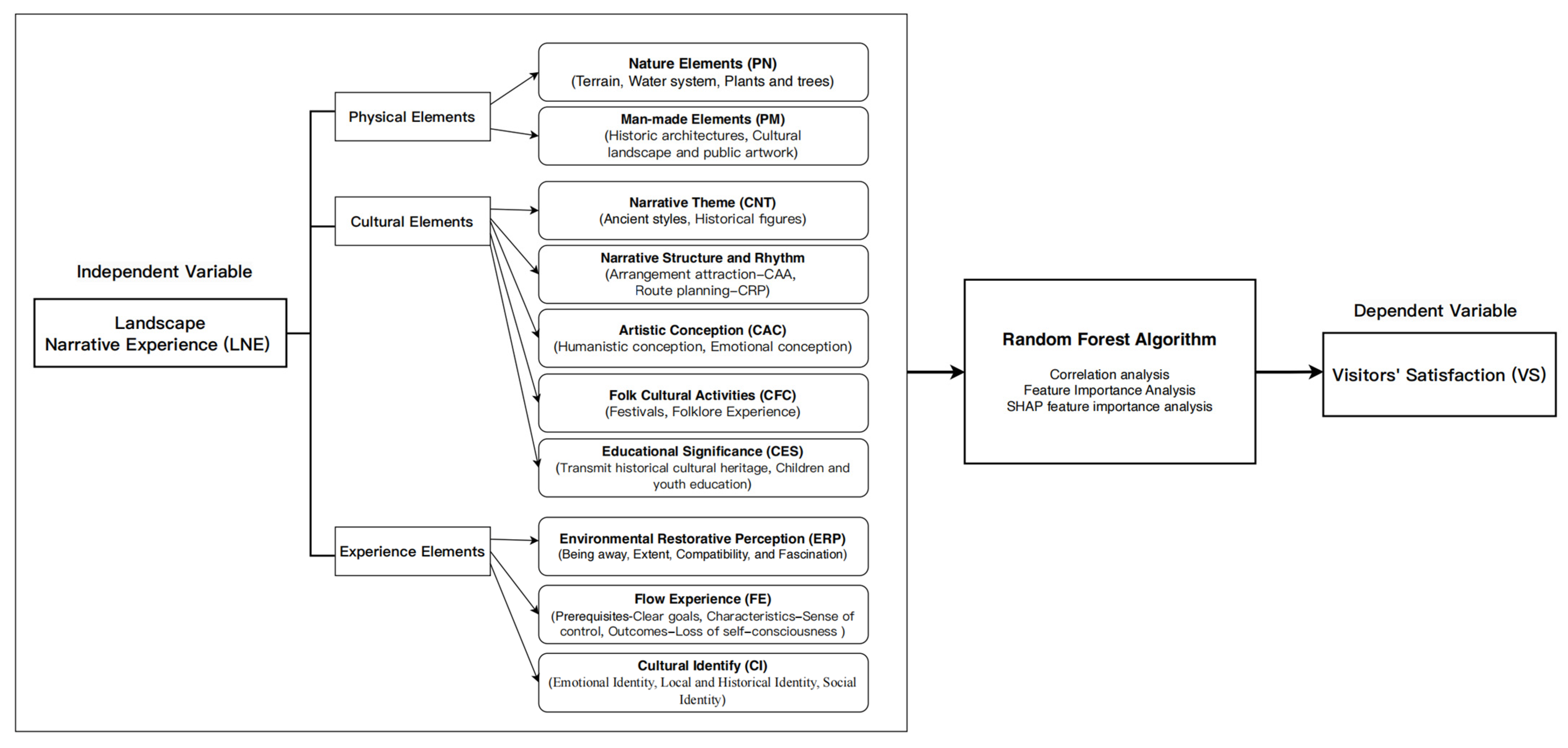

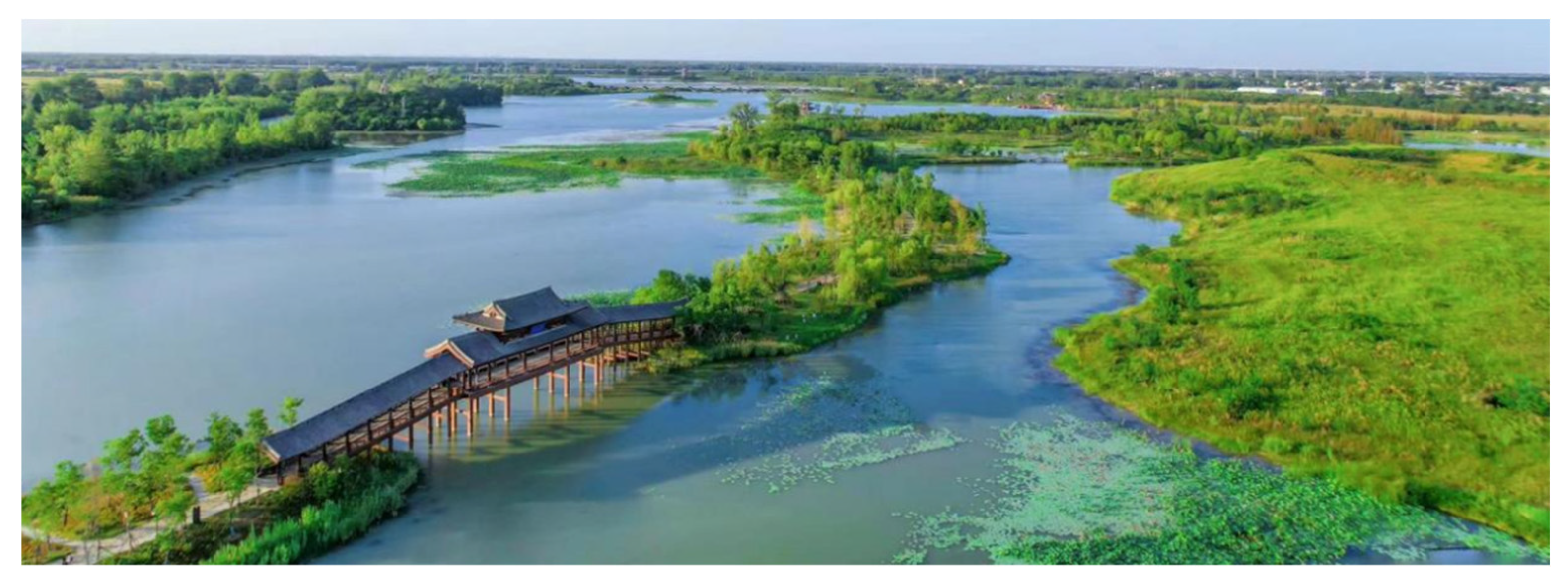
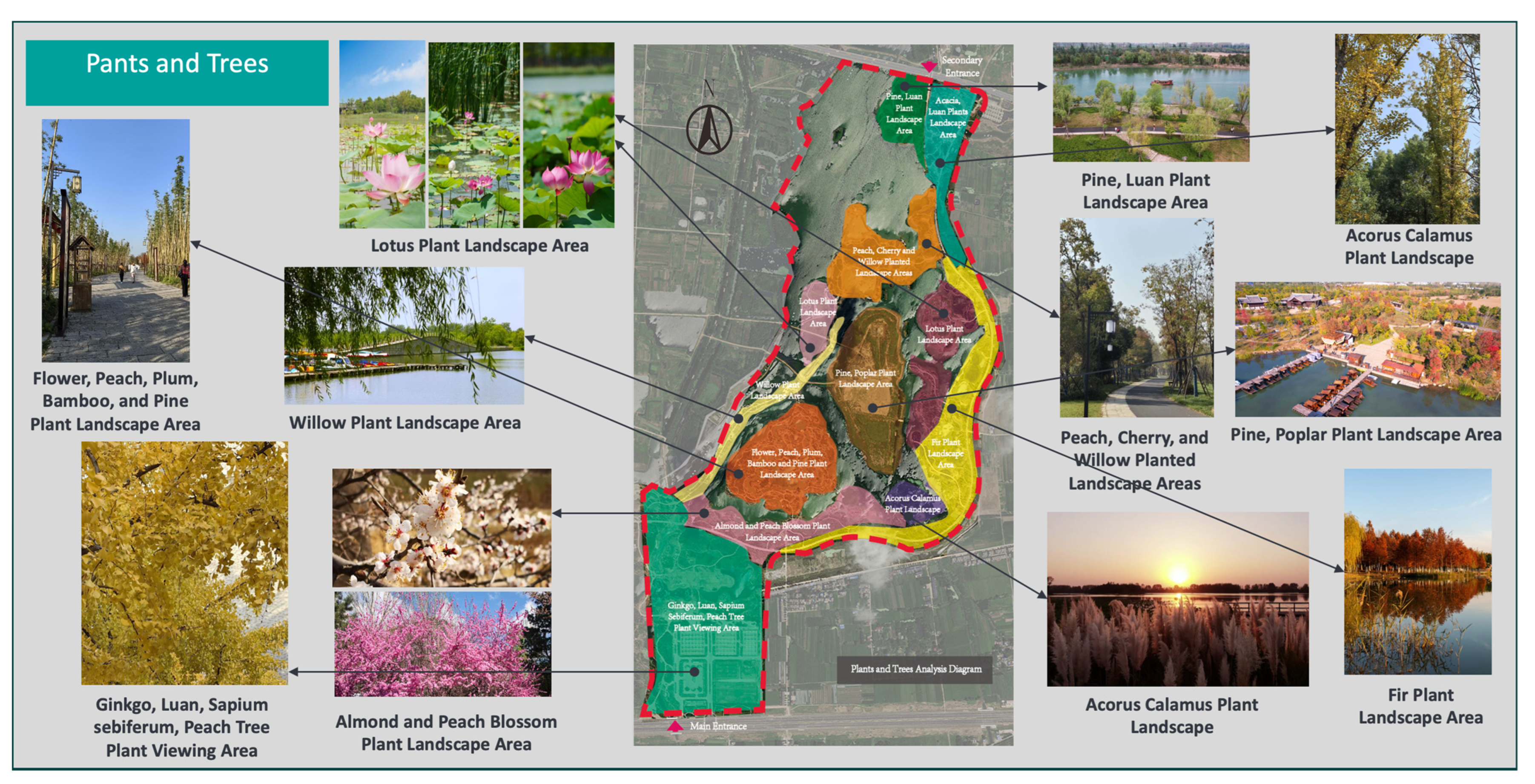
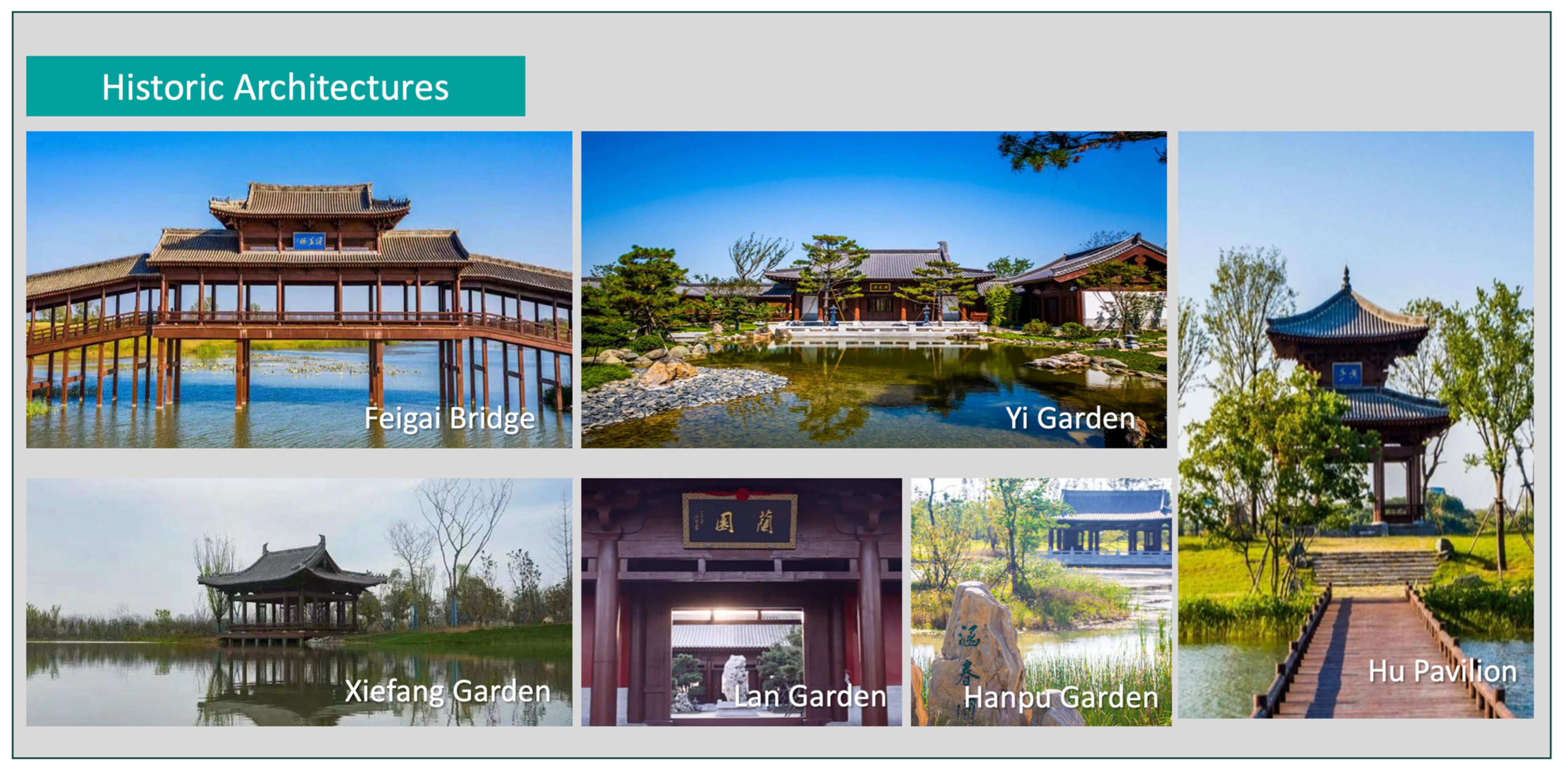
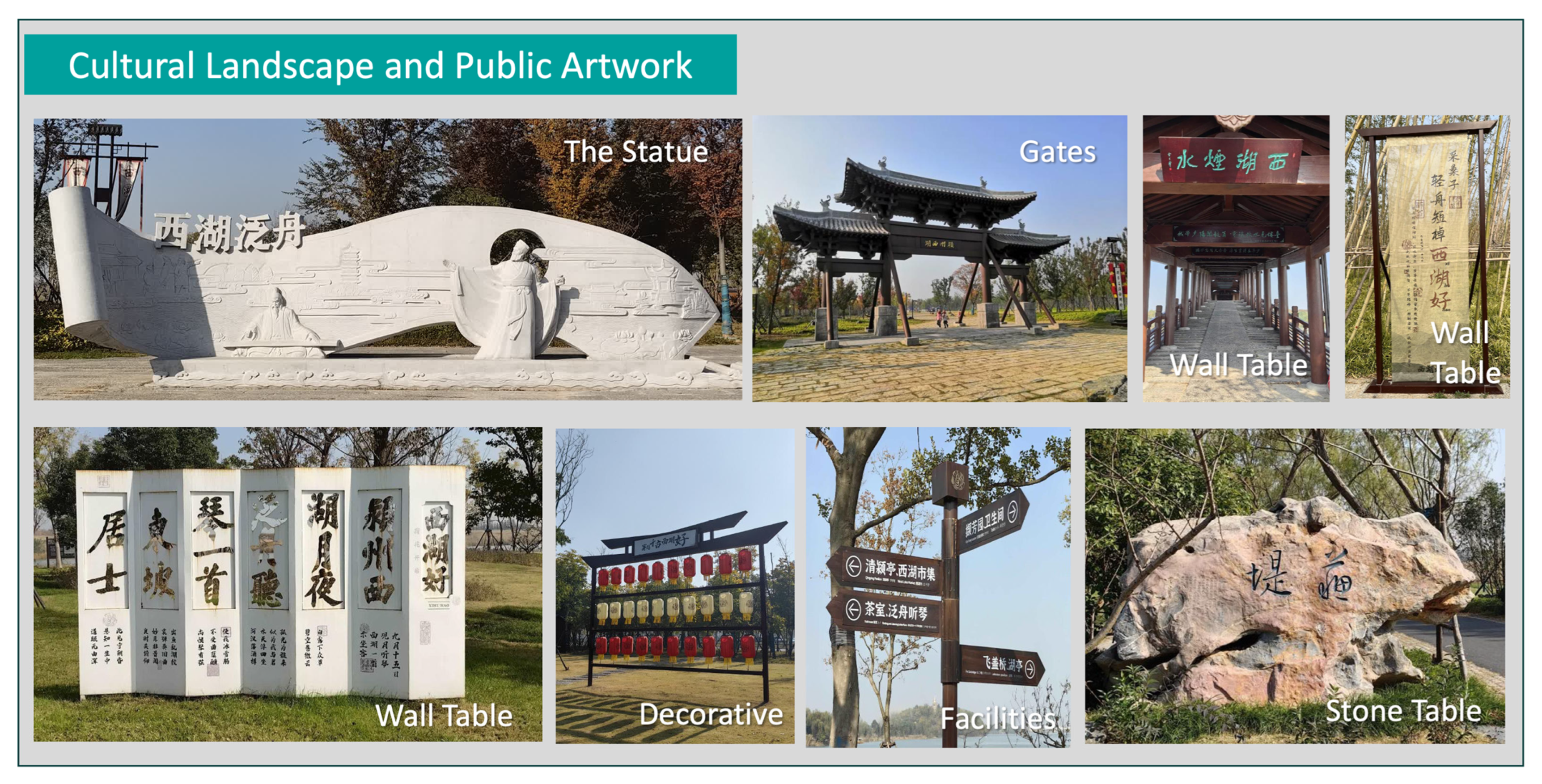
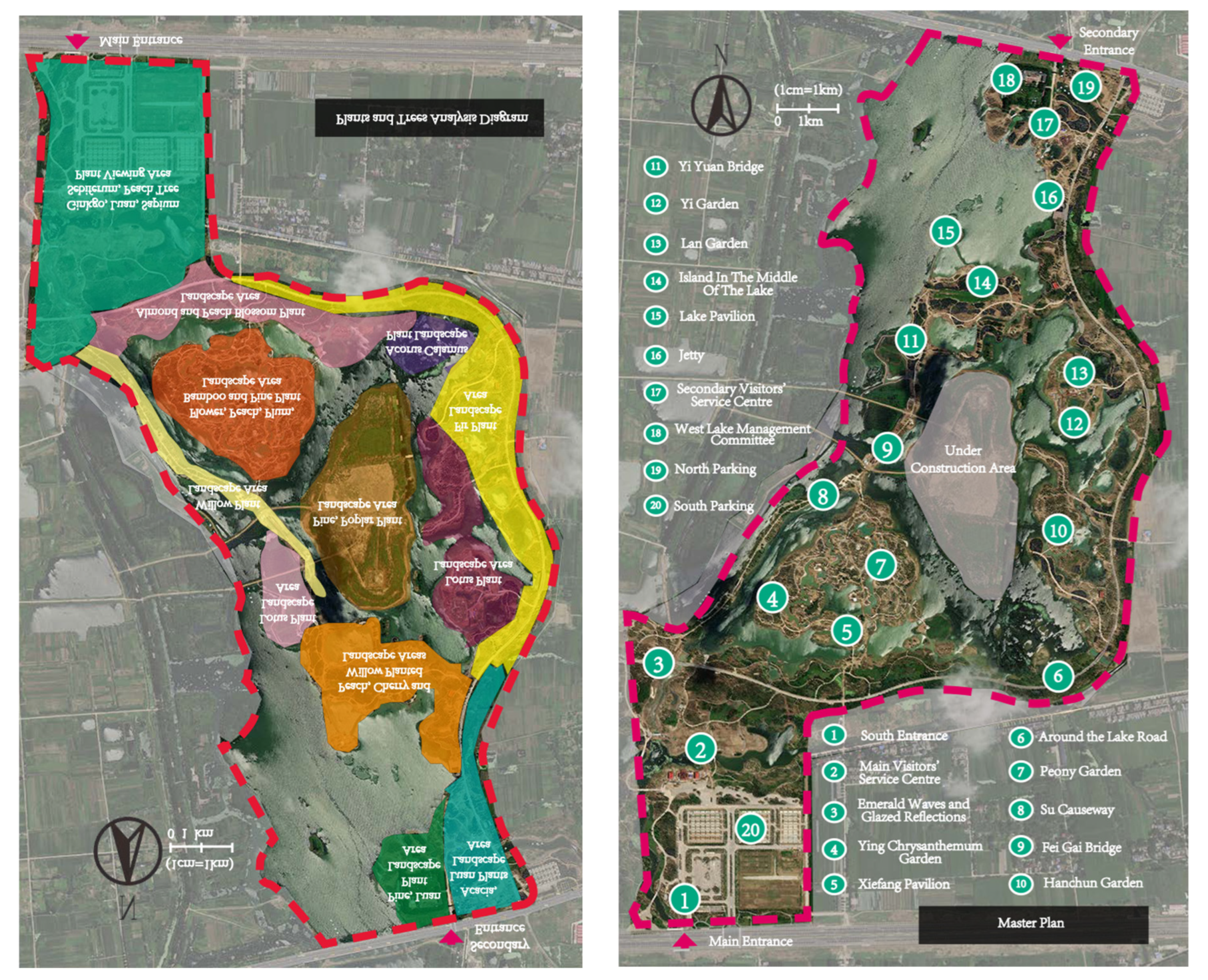
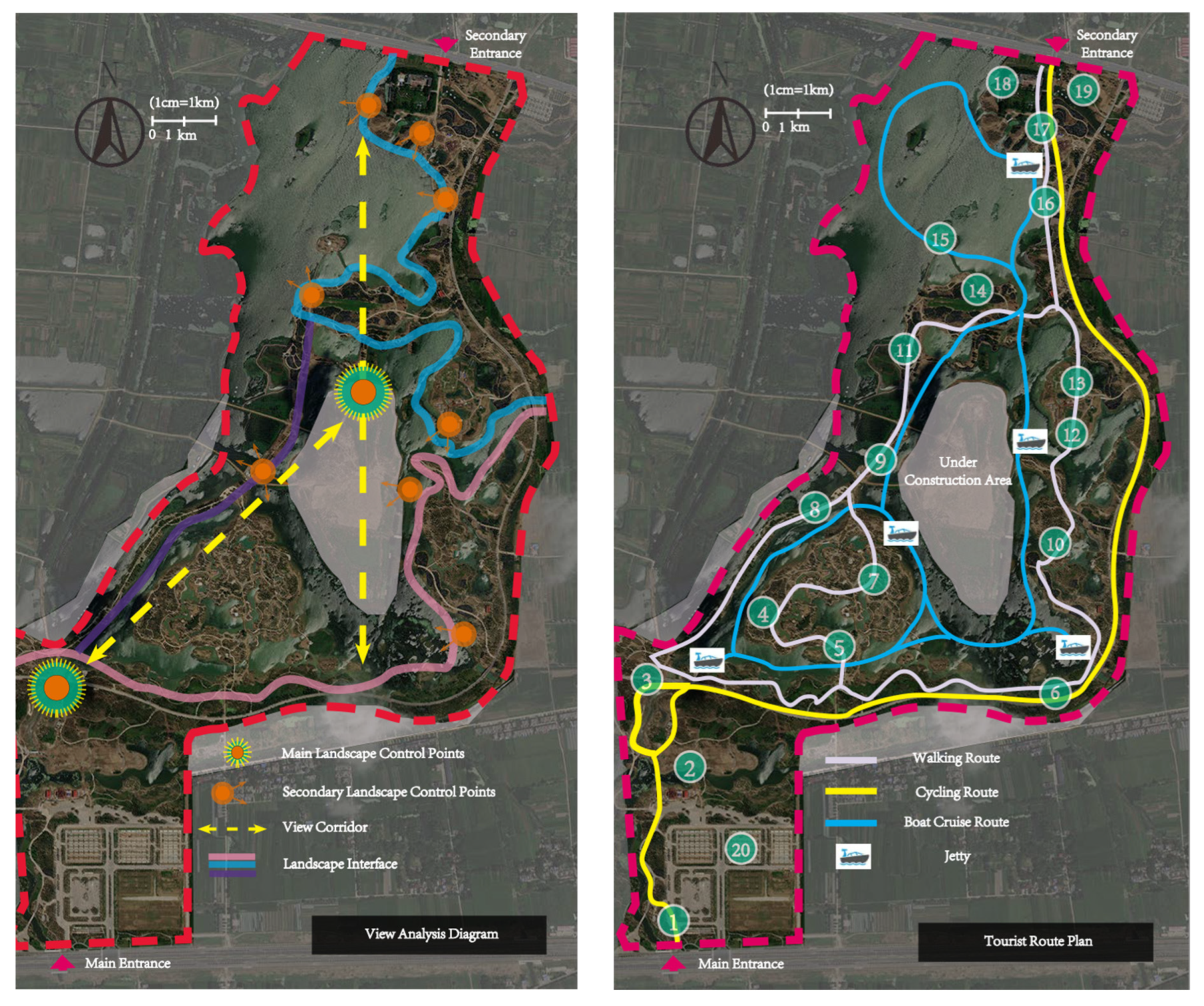
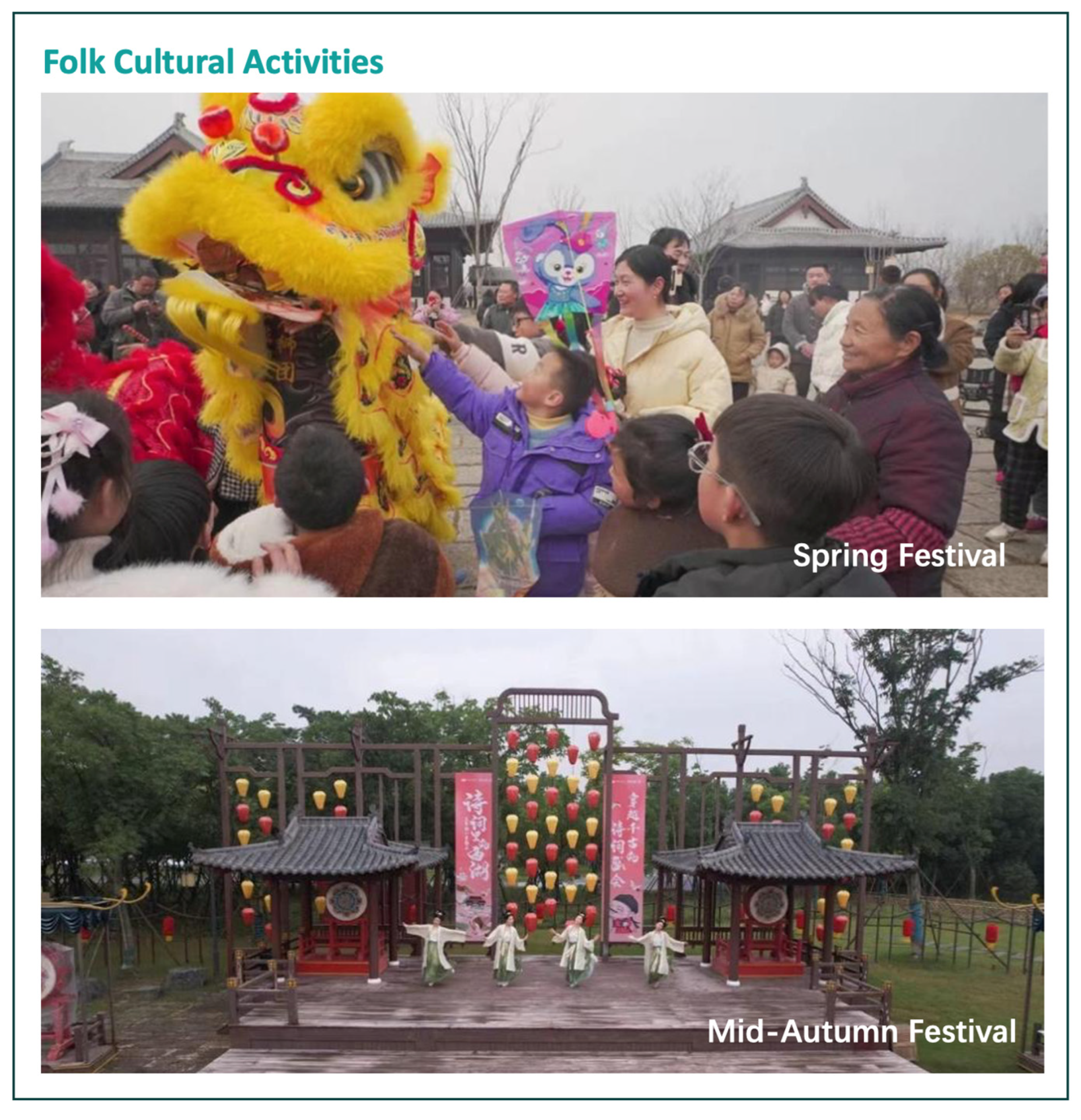
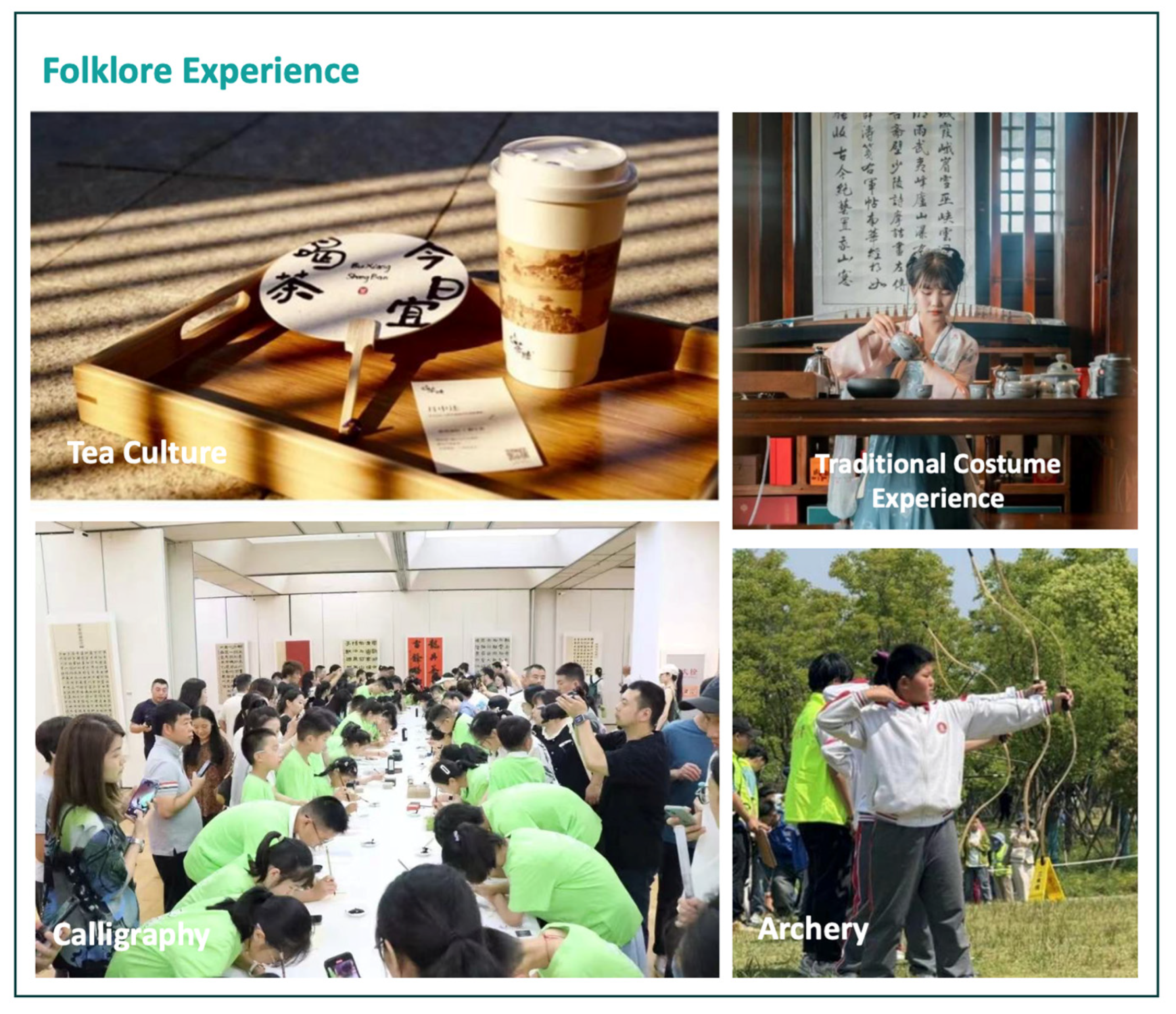
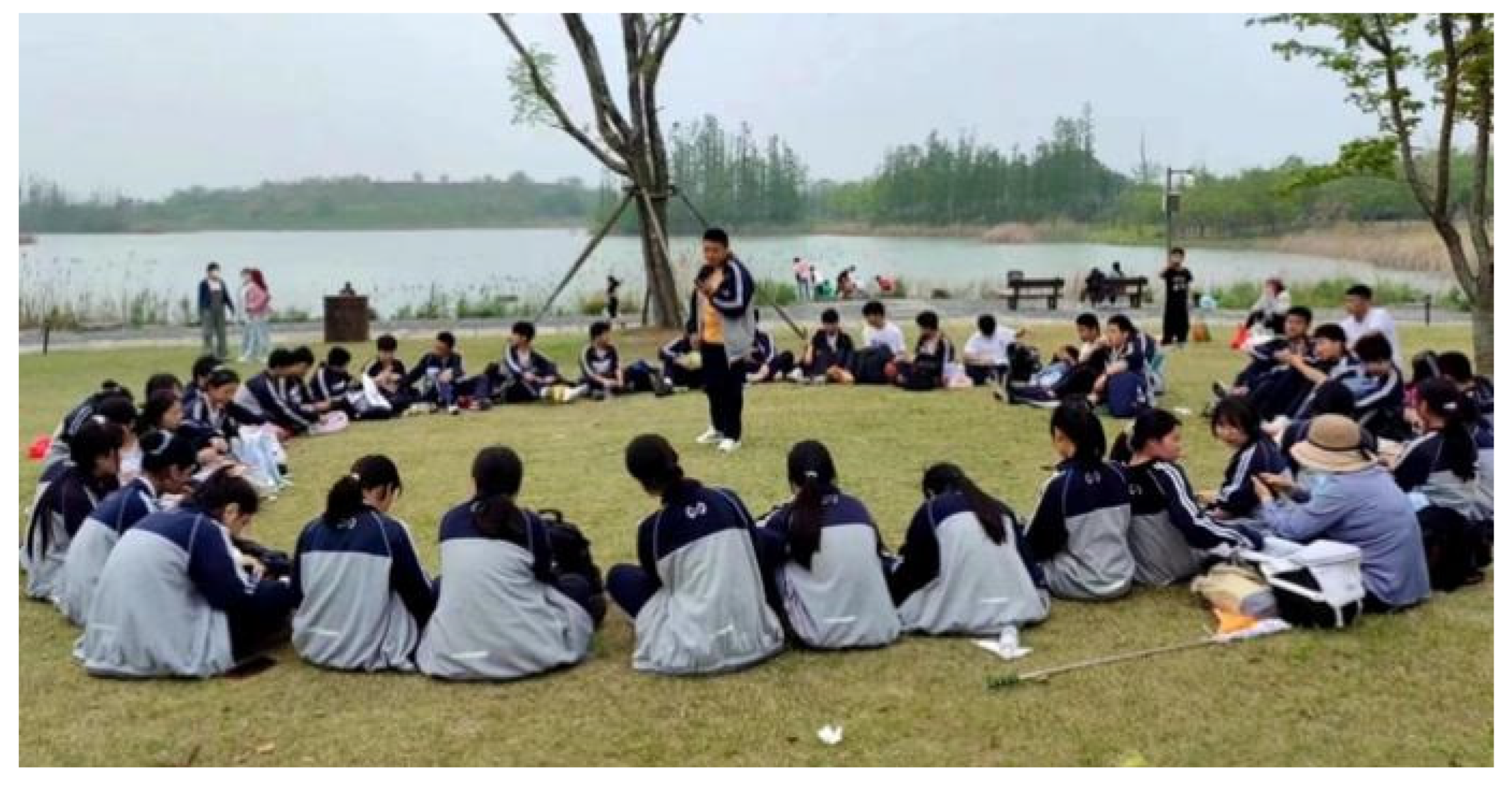
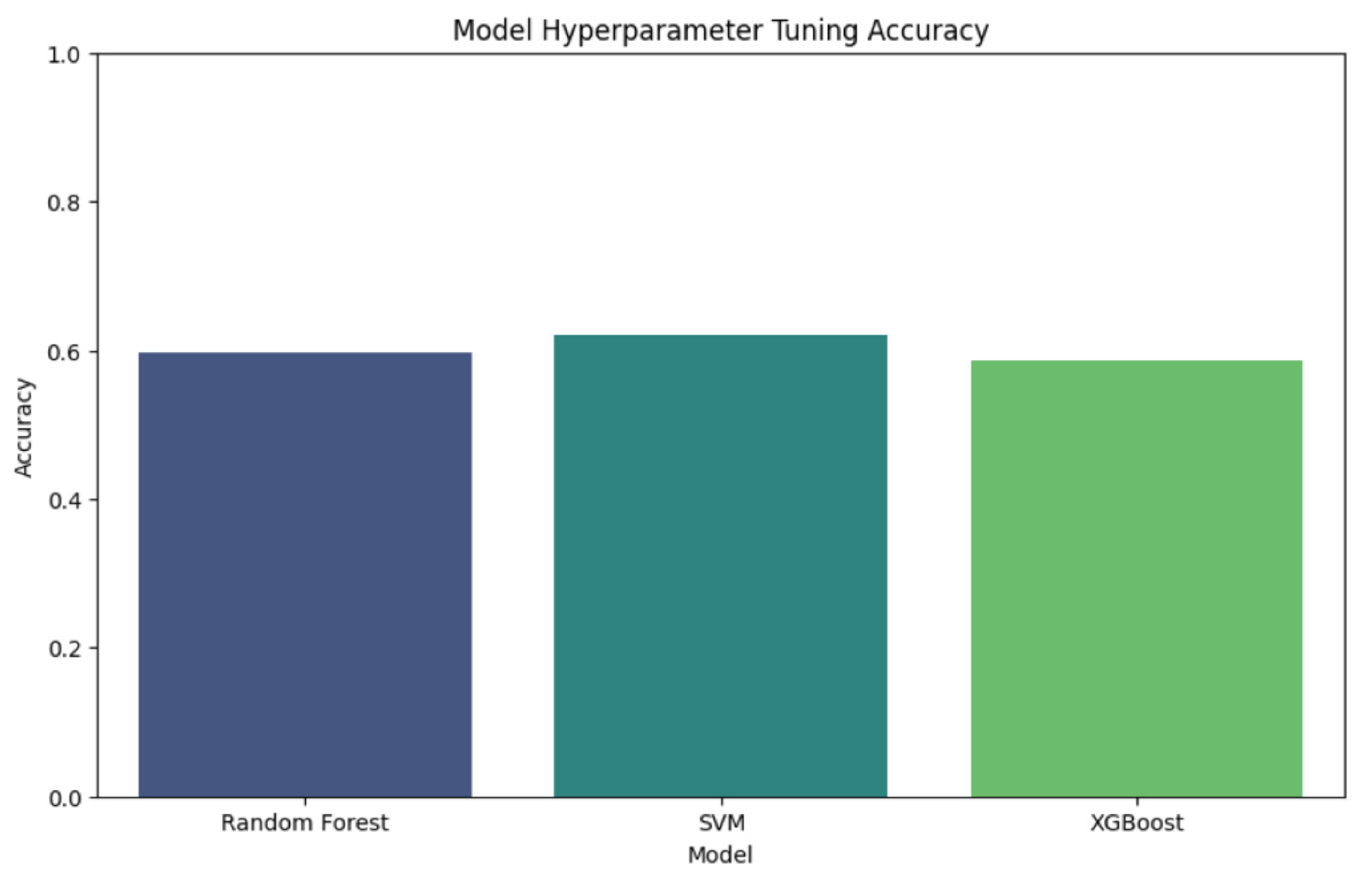

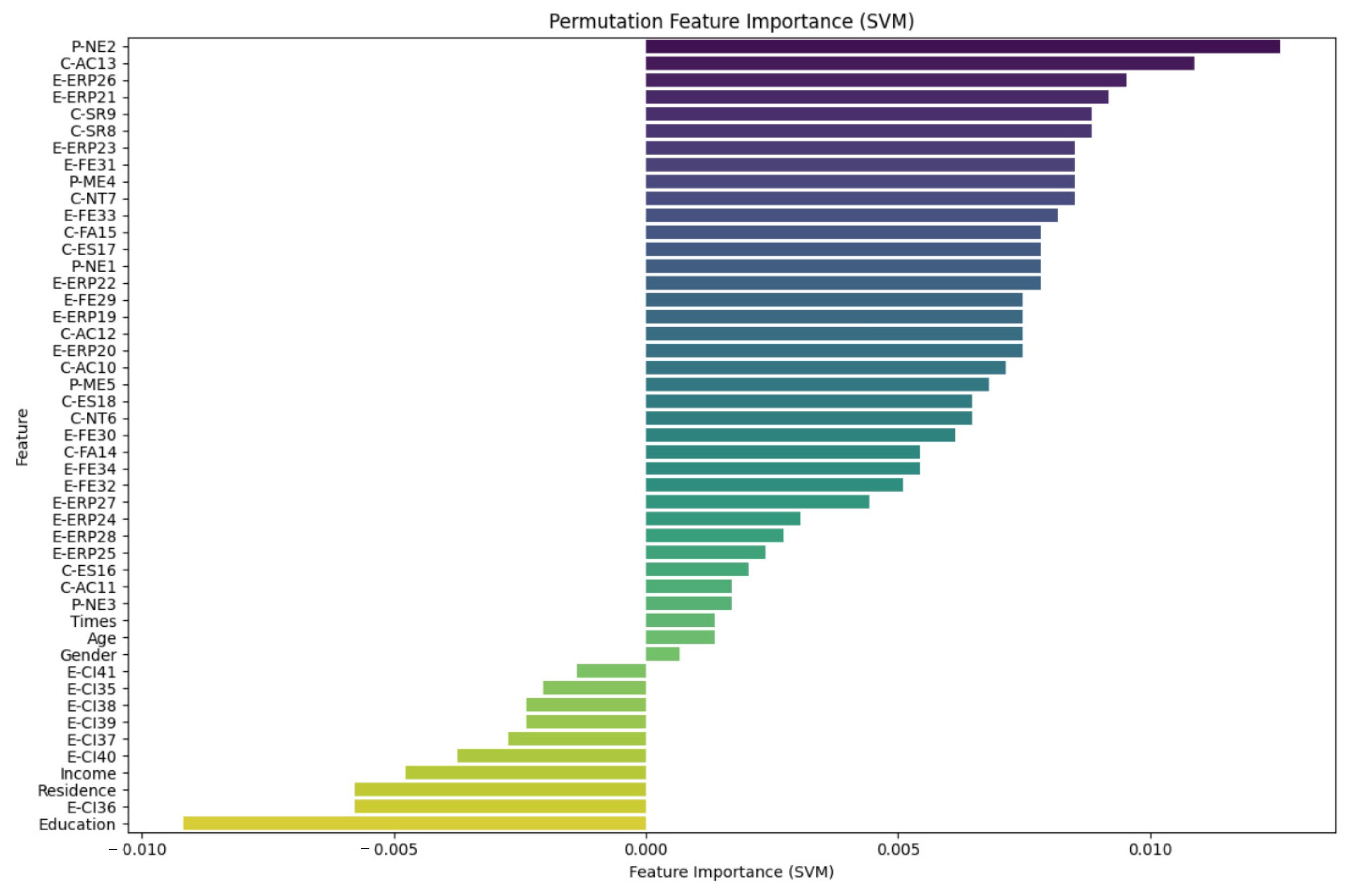
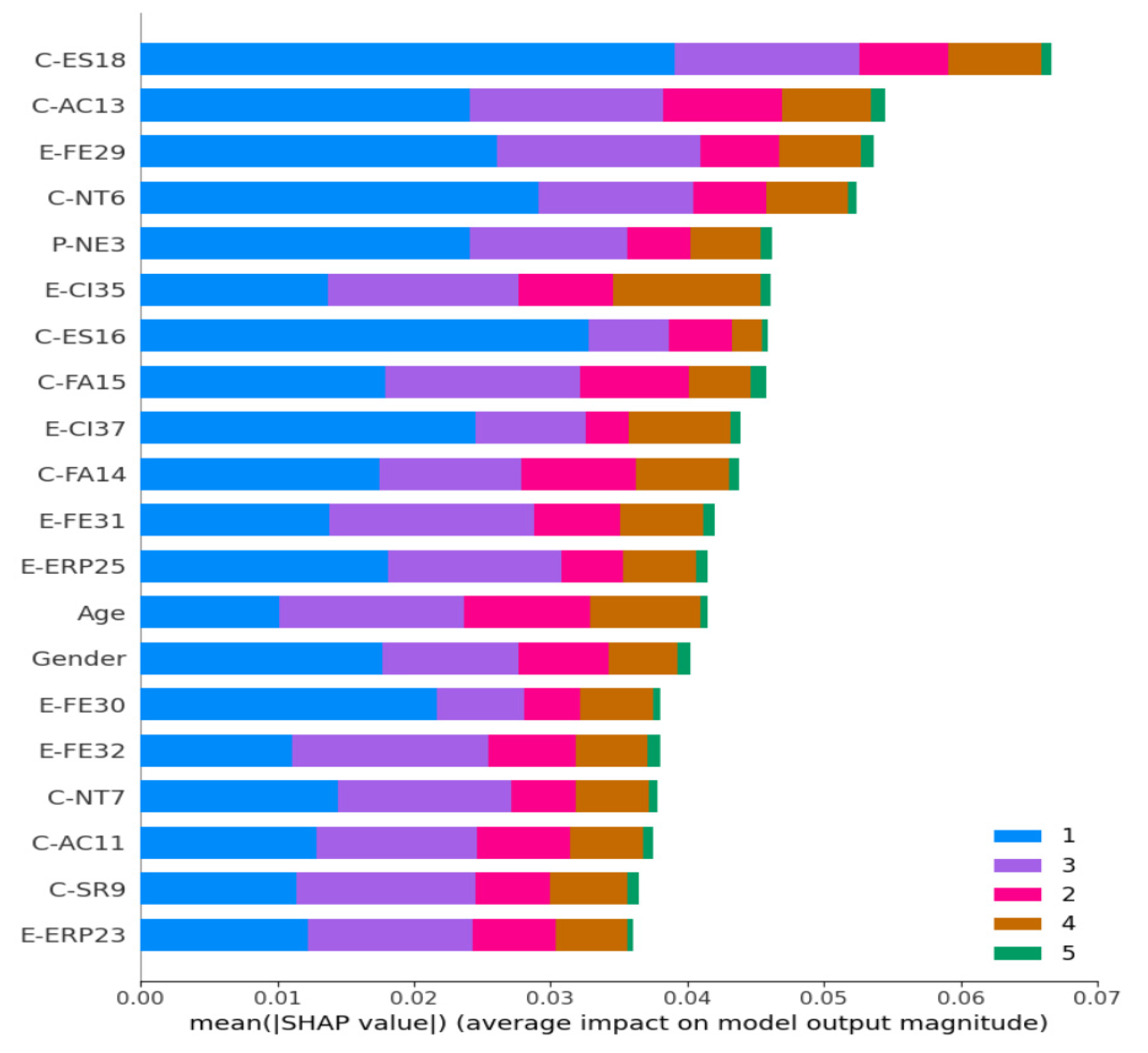

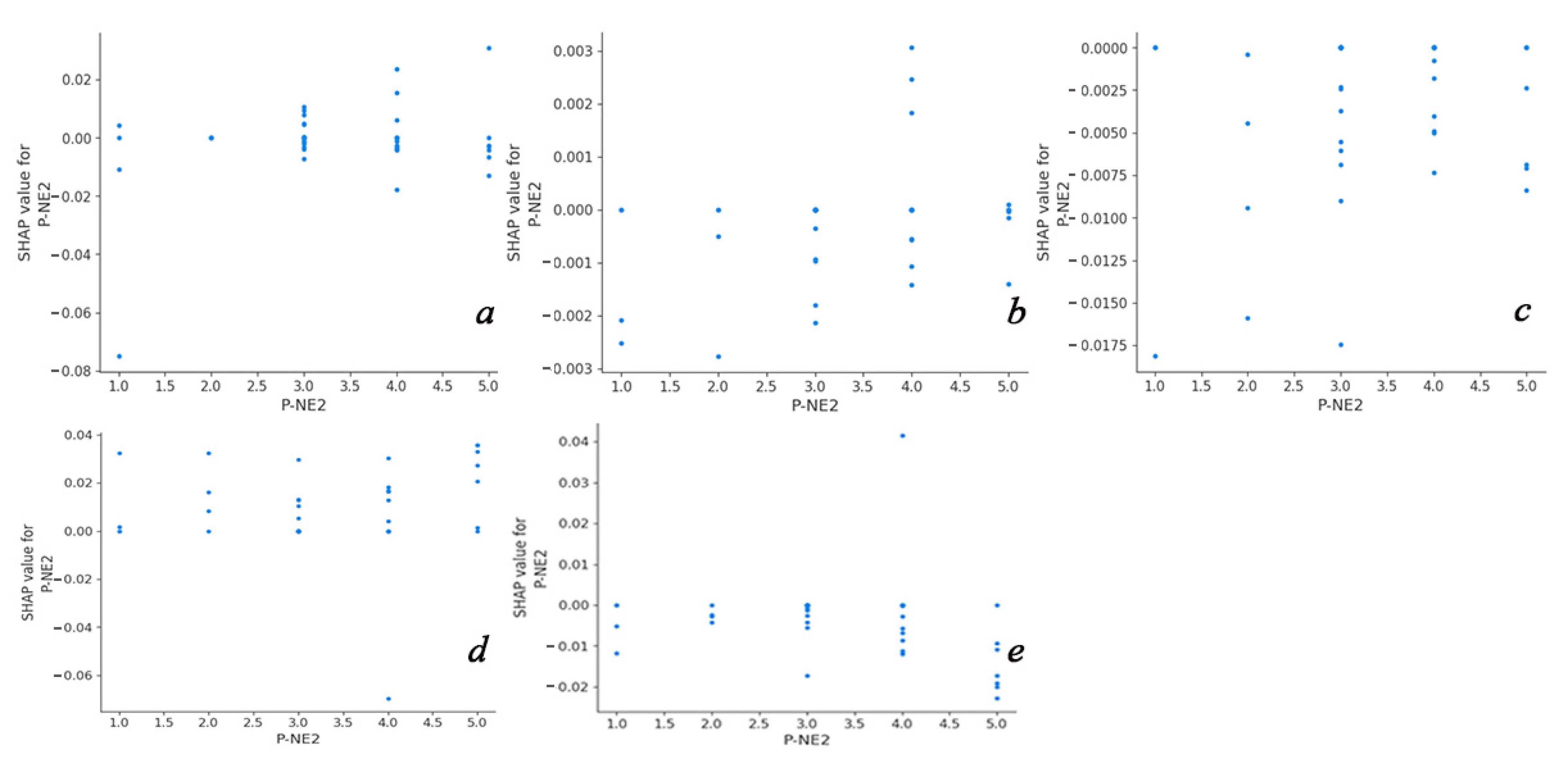
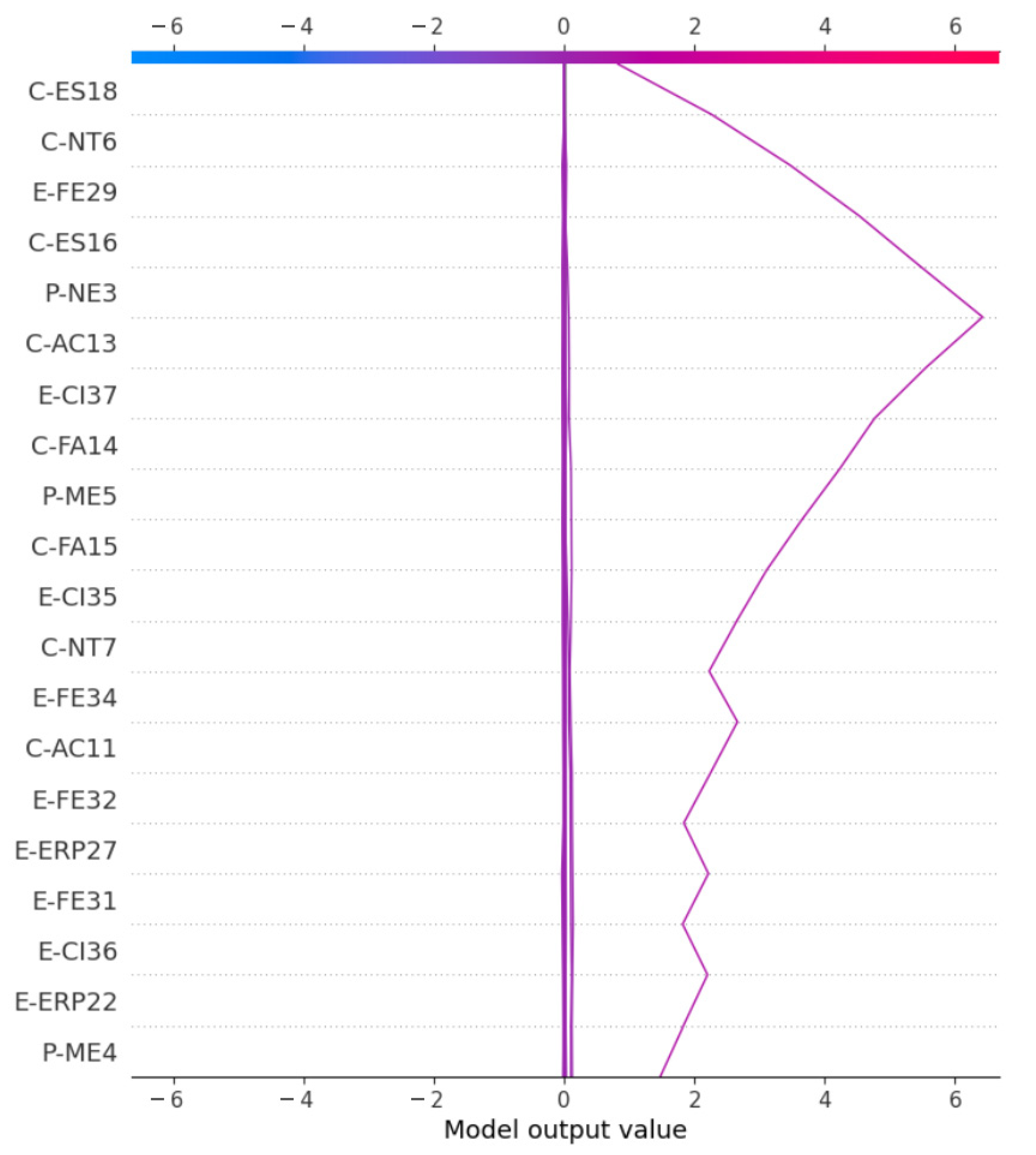
| Elements | Item Count | Cronbach α |
|---|---|---|
| Physical Elements | PN1 1–PN3 1, PM4 2, PM5 2, | 0.910 |
| Cultural Elements | CNT6 3, CNT7 3, CAA8 4, CRP9 5, CAC10–CAC13 6, CFC14 7, CFC15 7, CES16-18 8 | 0.9245 |
| Environmental Restoration Perception | ERP19-28 9 | 0.942 |
| Flow Experience | FE29-34 10 | 0.913 |
| Cultural Identity | CI35-41 11 | 0.948 |
| Visitor Satisfaction | VS42 12 | 0.890 |
| Model Fit Indicators | Statistical Value | Standard Value |
|---|---|---|
| CMIN/DF | 1.319 | 1–3 |
| RMR | 0.023 | 0.05 |
| GFI | 0.917 | ≥0.9 |
| AGFI | 0.905 | ≥0.9 |
| NFI | 0.941 | ≥0.9 |
| IFI | 0.985 | ≥0.9 |
| TLI | 0.984 | ≥0.9 |
| CFI | 0.985 | ≥0.9 |
| RMSEA | 0.026 | ≤0.08 |
Disclaimer/Publisher’s Note: The statements, opinions and data contained in all publications are solely those of the individual author(s) and contributor(s) and not of MDPI and/or the editor(s). MDPI and/or the editor(s) disclaim responsibility for any injury to people or property resulting from any ideas, methods, instructions or products referred to in the content. |
© 2025 by the authors. Licensee MDPI, Basel, Switzerland. This article is an open access article distributed under the terms and conditions of the Creative Commons Attribution (CC BY) license (https://creativecommons.org/licenses/by/4.0/).
Share and Cite
Xiang, C.; Rosni, N.A.B.; Ab Ghafar, N. A Landscape Narrative Model for Visitor Satisfaction Prediction in the Living Preservation of Urban Historic Parks: A Machine-Learning Approach. Sustainability 2025, 17, 5545. https://doi.org/10.3390/su17125545
Xiang C, Rosni NAB, Ab Ghafar N. A Landscape Narrative Model for Visitor Satisfaction Prediction in the Living Preservation of Urban Historic Parks: A Machine-Learning Approach. Sustainability. 2025; 17(12):5545. https://doi.org/10.3390/su17125545
Chicago/Turabian StyleXiang, Chen, Nur Aulia Bt Rosni, and Norafida Ab Ghafar. 2025. "A Landscape Narrative Model for Visitor Satisfaction Prediction in the Living Preservation of Urban Historic Parks: A Machine-Learning Approach" Sustainability 17, no. 12: 5545. https://doi.org/10.3390/su17125545
APA StyleXiang, C., Rosni, N. A. B., & Ab Ghafar, N. (2025). A Landscape Narrative Model for Visitor Satisfaction Prediction in the Living Preservation of Urban Historic Parks: A Machine-Learning Approach. Sustainability, 17(12), 5545. https://doi.org/10.3390/su17125545






